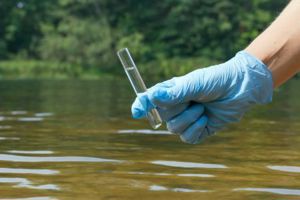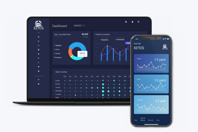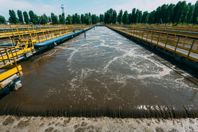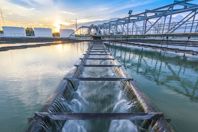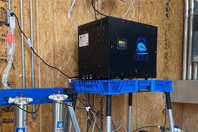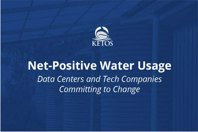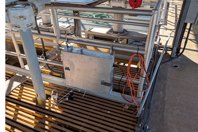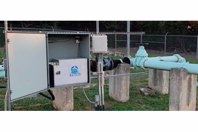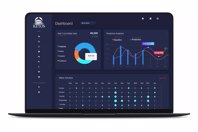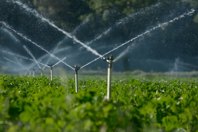
ABOUT KETOS
KETOS is a frontier tech company pioneering in providing water intelligence for Industry.
KETOS offers a vertically integrated solution combining robotics, data science, materials and IoT for water. Its software-enabled hardware and predictive intelligence enables operators to optimize process control, improve water treatment/ reuse, meet compliance requirements and boost efficiency through 100% autonomous (labor-free) monitoring and being affordable as a $0 CapEx/Purchase offering.
Founded in Sep 2015, KETOS is a venture-backed company led by CEO Meena Sankaran and recognized by Nasdaq, Goldman Sachs, Forbes, Global Water Awards, World Open Innovation Conference and others. Through insight-driven decision making, KETOS is adding significant value on industrial discharge, municipal recycling, agricultural crop yield, food safety and public health with specificity, sensitivity and accuracy comparable to labs in real-time.
"You can't act on what you don't measure". Smart water grids and management can be built with the very crux of effective data sensing, collection, mining and analysis with interoperable systems. KETOS helps customers to focus on the value of their data through a holistic architecture as part of their unique digital journey.
CONTACT INFORMATION
KETOS
520 Mercury Drive
Sunnyvale, CA 94085
UNITED STATES
Contact: Meena Sankaran
FEATURED ARTICLES
-
KETOS PRISM is an environmental intelligence tool that sources, aggregates, and analyzes publicly available environmental data from various sources, including the EPA, USGS, NOAA, and NASA.
-
Though new EPA regulations are set to enforce stricter limits on PFAS in drinking water by 2029, millions of students are already attending schools in areas with elevated risk today.
-
This whitepaper provides a detailed 10-year cost comparison between freshwater usage and water recycling, showing that the total cost of recycling systems typically outweighs the cost of municipal water usage in the United States.
-
In this case study, explore how a municipality automated its water quality testing to ensure compliance in real time.
-
In this white paper, learn how real-time monitoring of ammonia (NH₃) and nitrogen (N) in wastewater treatment plants (WWTPs) can be a game-changer for optimizing treatment performance and energy efficiency.
-
As public awareness of per- and polyfluoroalkyl substances (PFAS) grows, so too does concern over their widespread presence in our water, soil, food, and even our bodies. Rapid, on-site, or remotely operated detection of these “forever chemicals” is a crucial step to understanding the levels of PFAS within our systems.
-
Learn about funding initiatives that have passed to address potential health and safety issues in water and wastewater treatment systems.
-
Water sustainability, conservation, and resiliency have become essential focus areas for many companies. While the US was once a water-rich country, certain areas are seeing what used to be an abundant resource become scarce.
-
Food company leverages the KETOS SHIELD to stabilize water quality, reduce chemical costs, and ensure compliance with proactive water quality monitoring.
-
Data center operators and many of the world’s largest tech companies are taking steps to ensure the long-term sustainability of water supplies by quantifying water usage -- while reducing overall water usage.
-
In soilless conditions, such as vertical farming scenarios, crops rely on water to receive the vital nutrients they need to grow and bear fruit. That doesn’t mean they use a lot of water. In fact, vertical farming utilizes up to 95% less water than traditional open field farming methods due to recycling methods and highly efficient systems.
-
Water is an essential component to oil and gas operations around the world. While it is integral to production, effluent water is often regulated and must be properly treated before it can be released back into the environment.
-
Municipalities have a distinct role to play in the protection of public health. They are both a major source of information for the public as well as a critical provider of water infrastructure - providing both delivery of safe, clean drinking water, and the treatment of stormwater and wastewater. While water is a basic human need that is classified as a public good, when it comes to water quality monitoring, municipalities face a variety of challenges.
-
There is an ever-increasing focus on sustainability within the mining industry. Mining companies are already increasing their collaboration with local communities to improve existing infrastructure, reduce costs, and monitor local water supplies alongside governmental entities, but there is still much to be done.
-
Water in meat processing is used for a variety of purposes, including chilling, scalding, washing, cleaning, and waste removal/ conveying. As the final product is to be consumed, stringent regulations surround the slaughtering, cleaning, and processing of meat products.
-
When considering the resources needed for manufacturing for industrial purposes, we often overlook one of the largest and most important commodities used at almost every stage of the production process - water. Pharmaceuticals, semiconductors and smelting facilities all use water as an essential component of their processes. Manufacturing accounts for almost 25% of global freshwater withdrawals with that number only projected to increase with time says Fluence. However, with water scarcity a real threat to the global water supply as well as increased attention to sustainability in water by regulators and key stakeholders, the manufacturing industry must focus on managing their water usage efficiently and effectively.
-
Data generation has exploded in recent years. In fact, 90% of the world’s data has been created in the last two years alone, and estimates predict that the Worldwide Big Data market will double in the next several years. According to a recent McKinsey report, organizations can realize significant returns by investing in BI Analytics. In fact, investing in analytics will realize “a higher rate of return than other recent technologies have yielded, surpassing even the computer investment cycle in the 1980s.”
-
Water is an integral part of the agricultural sector. Agriculture uses the majority share of global freshwater resources - a staggering total of 70%. According to UNESCO, as an enormous consumer of water, the agricultural sector has been condemned for their seeming lack of efficiency in water usage despite intersectoral competition for water and an increase in water scarcity.
-
Columbia Water Center says that while many industries rely on water for operating processes, water is a particularly crucial component of the mining industry. At KETOS, many of our mining customers are faced with challenges that include increasing water maintenance costs. There's also an ever-increasing focus on sustainability within the industry. Mining companies are already increasing their collaboration with local communities to improve existing infrastructure, reduce costs, and monitor local water supplies alongside governmental entities. However, there is still much to be done to streamline water usage across the industry, says International Council on Mining and Metals.

